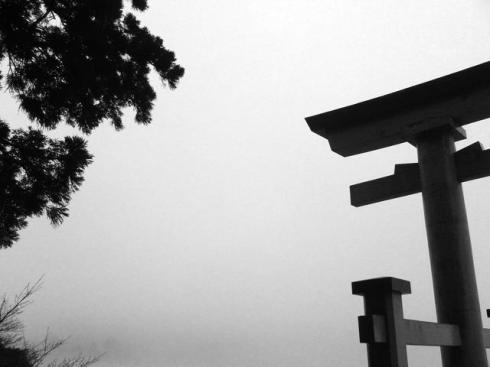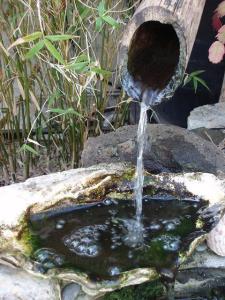
Stations of the Cross #5, “Simon of Cyrene carries the cross”, Notre-Dame Basilica, Geneva.
On Good Friday I sat in church, watching and listening as most of the congregation followed the priest around the fourteen Stations of the Cross. The woman with the walking-frame, stoically devout, completed the circuit with the others, while her white-muzzled black dog hobbled back and forth up and down the nave, stopping to receive attention from some of those who, like me, had remained in their pews.
Meditations translated from the words of French poet Paul Claudel were spoken gently by a man known for his work as a broadcaster. Between the meditations, periods of silence were terminated by spells of difficult and discordant organ music – some strident, some morose – which I could have done without.
I had earlier told the woman who had welcomed me that my parents had been married in this church, and that I had been baptized here.
I will return to St Peter’s on Willis on Easter Day, looking forward to the Eucharistic ritual I have not shared in since Midnight Mass at Wellington Cathedral on Christmas Eve.
__________
The tradition of moving around the Stations to commemorate the Passion of Christ began with St. Francis of Assisi and extended throughout the Roman Catholic Church in the medieval period. It is also observed in Lutheranism and Anglo-Catholicism. It is most commonly done during Lent, especially on Good Friday (from Wikipedia: Stations of the Cross).
Wikimedia Commons includes a page with links to images of twelve of the fourteen Stations of the Cross by sculptor Jean-Bernard Duseigneur. (This page gives his name as Jean-Baptiste Du Seigneur, and he is elsewhere known as Jehan Duseigneur; eg, on Paris Sculptures.) Born in Paris in 1808, Duseigneur studied at the École des Beaux-Arts, and in 1831 achieved renown when he exhibited Roland Furieux, often regarded as the first romantic sculpture (now in the Louvre). Soon afterwards he turned almost exclusively to the production of religious works (adapted from a brief article in Wikipedia).
PS – Easter Day: The old black dog, Emma, was there again today; she, like the other “regulars”, was wearing her name-tag.





